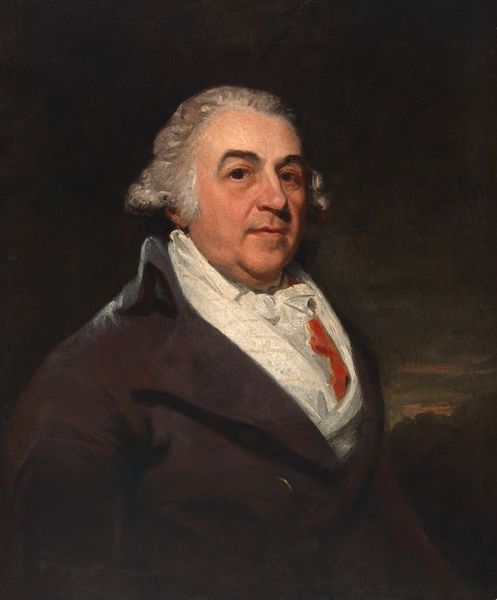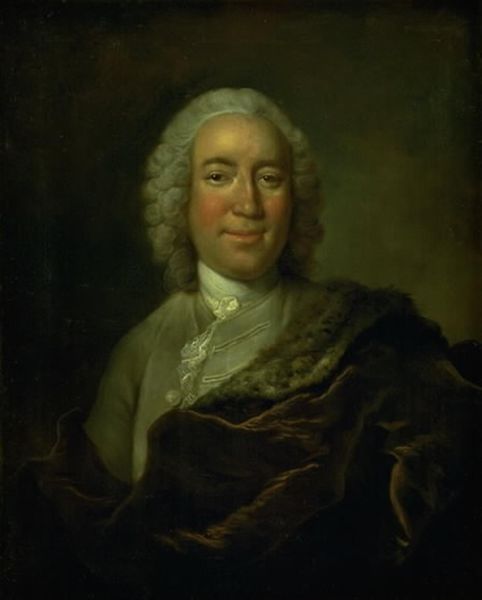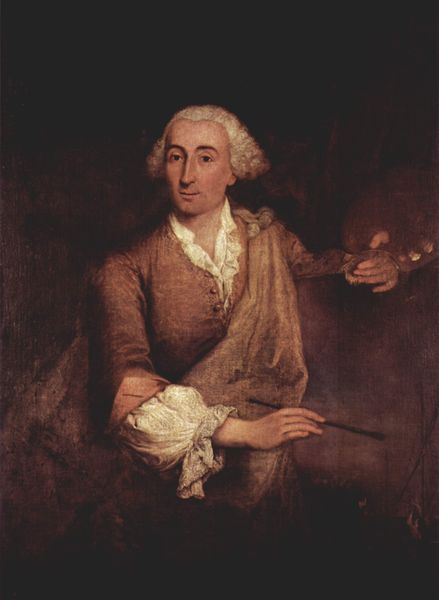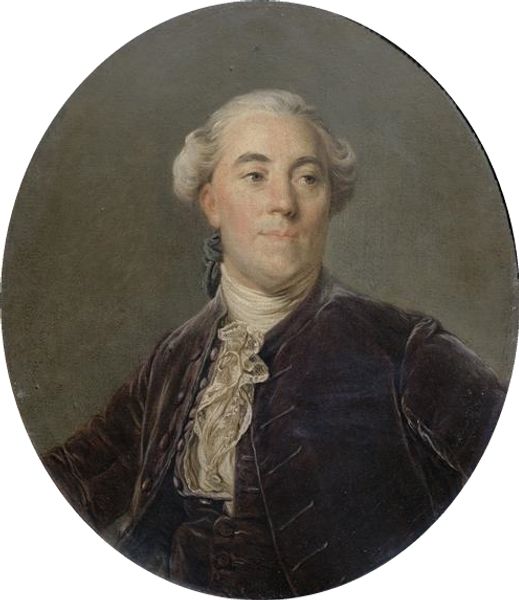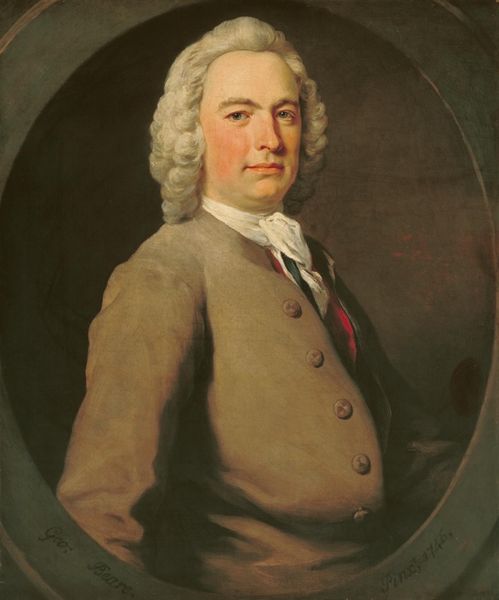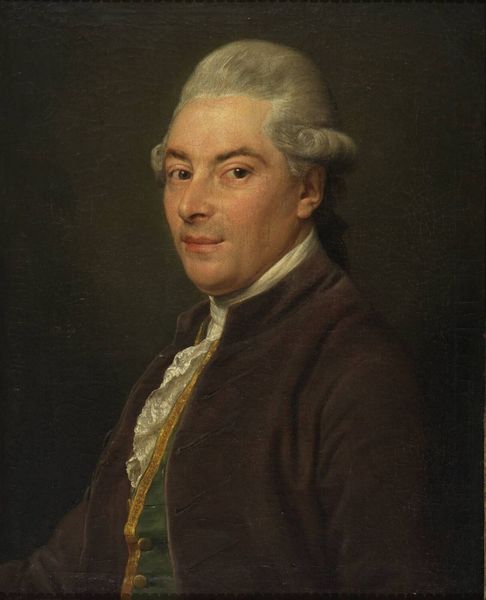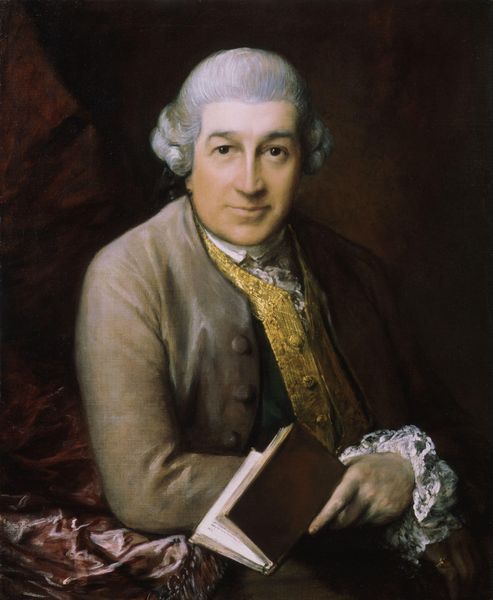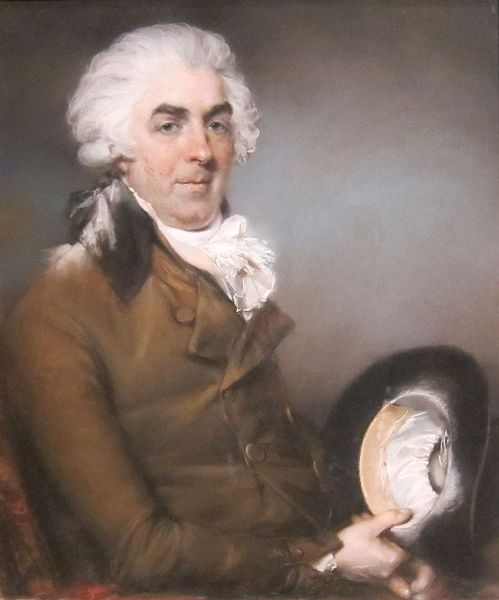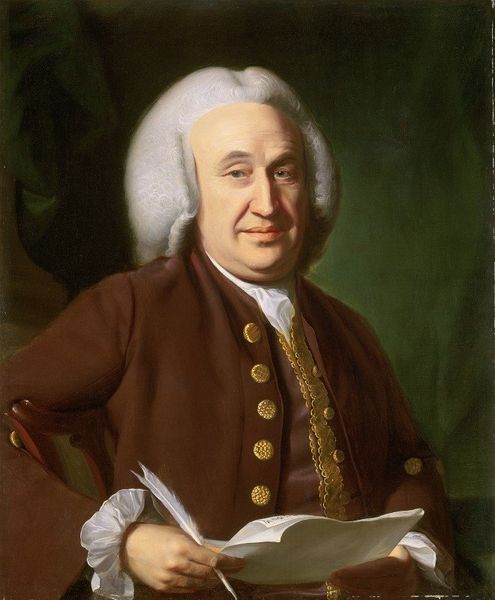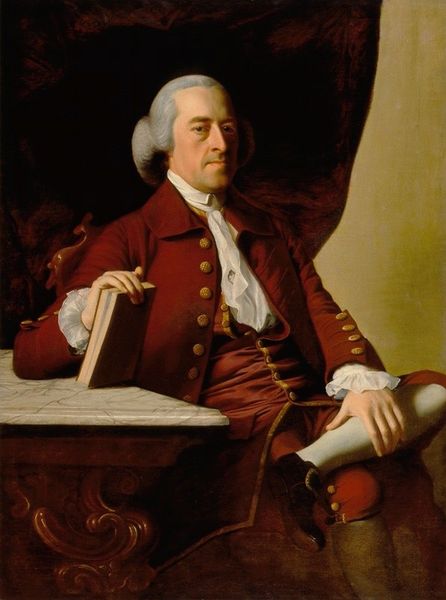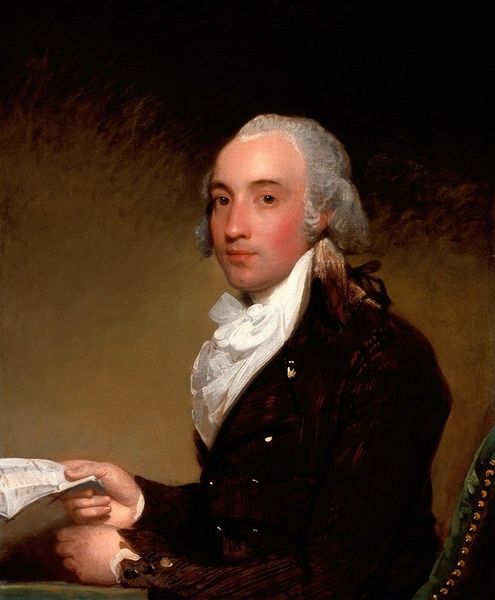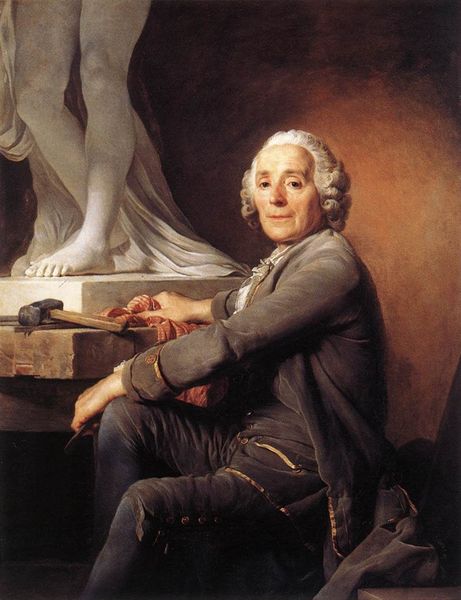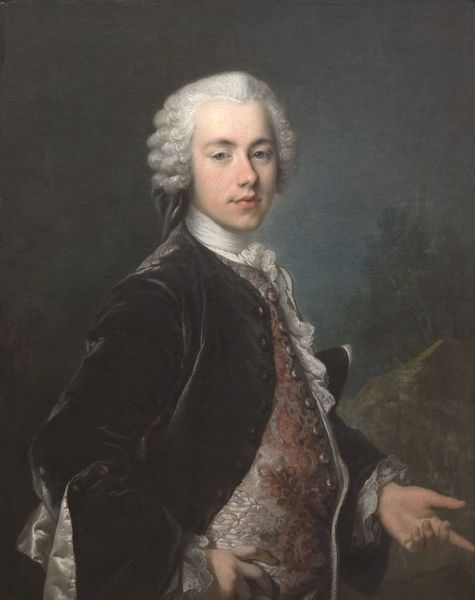
Dimensions: support: 889 x 711 mm frame: 1055 x 840 x 80 mm
Copyright: CC-BY-NC-ND 4.0 DEED, Photo: Tate
Curator: Johan Zoffany painted this portrait of Stephen Rimbault. Editor: He looks so self-satisfied. I wonder what tune he's about to play for us. Curator: Rimbault was an organ builder in London, instrumental in shaping the soundscape of the city's churches and concert halls. Editor: An organ builder, huh? So he's literally constructing the architecture of sound. What kind of access did that give him? How did that shape his identity? Curator: He certainly occupied a prominent position within the city's cultural life. Zoffany often depicted individuals who were influencers in the arts and sciences. Editor: It's fascinating to consider how these images of men like Rimbault contribute to the historical narrative, often overshadowing the contributions of women and people of color in the same era. Curator: Indeed, this painting allows us to consider the power dynamics inherent in portraiture and the role of art in shaping historical memory. Editor: Precisely. It reminds us to critically examine the stories we tell about the past and whose voices are amplified in those narratives.
Comments
tate 6 months ago
⋮
http://www.tate.org.uk/art/artworks/zoffany-stephen-rimbault-n04434
Join the conversation
Join millions of artists and users on Artera today and experience the ultimate creative platform.
tate 6 months ago
⋮
Stephen Rimbault (working 1744-88) was a famous clock maker of Huguenot descent, particularly noted for his 'twelve-tuned Dutchmen', clocks which played twelve tunes, with moving figures in front of decorated backgrounds. He did business in Great Andrew's Street, St Giles.After Zoffany's arrival in England around 1760 he had difficulty finding work as a portrait painter, hindered in part by his poor English. He was living, almost destitute, in the garret of a house in Short's-gardens, Drury Lane, belonging to an Italian musical box maker named Bellodi, who worked for Rimbault pricking the barrels for the musical clocks. Bellodi introduced Zoffany to the clock maker, who employed Zoffany to paint clock faces. According to family tradition, Rimbault brought Zoffany to the attention of Benjamin Wilson, a minor portraitist who, admiring Zoffany's figurative work on the clock faces, offered him the post of drapery and figure painter at a salary of forty pounds a year. Through Wilson Zoffany met the actor-manager David Garrick, who became Zoffany's first major English patron. Zoffany is said to have made this portrait in gratitude to Rimbault.The picture always remained in the Rimbault family, passing from the sitter to his nephew Stephen Francis Rimbault, an organist, collector of Rowlandson's drawings and friend of Samuel Wesley, who in the 1820s had the painting hanging over the chimney-piece in the front parlour of his house at 9 Denmark Street, Soho, London. He left the picture to his son Edward Francis Rimbault, musical author and antiquary. He passed it to his godson E. Rimbault Dibdin, whose daughter Mrs Alfred Aslett bequeathed it to the Tate Gallery.Further reading:John Thomas Smith, ed. Wilfred Whitten, Nollekens and his Times, London and New York, 1829, II, pp.67-9Mary Webster, Johan Zoffany 1733-1810, exhibition catalogue, National Portrait Gallery, London 1976, p.35, reproducedTerry RiggsJanuary 1998
